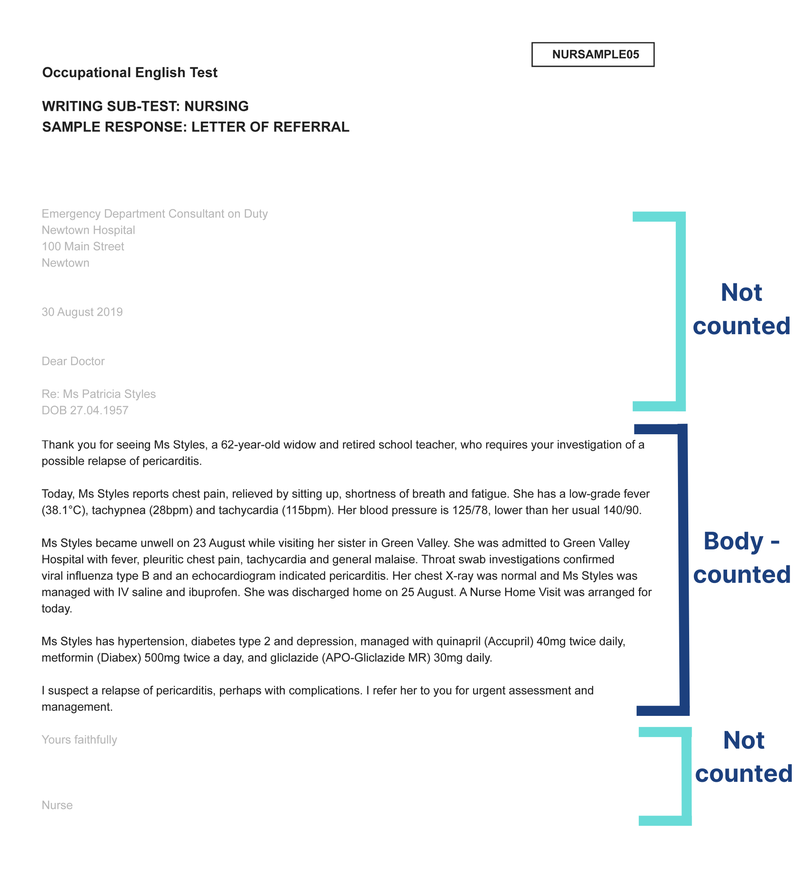
The purpose of a word limit
Essentially, the word limit of 180-200 words in OET Writing is there as a guide. If there was no word limit given at all, then some candidates would write far too little for the assessors to be able to grade their language level. On the other hand, some candidates would write far too much without showing any restraint for the task. The guide of 180-200 words is set because the case notes have been written so that you can write a satisfactory letter using them within the time limit of 40 minutes.
Which words are included in the word limit?
Only the body of the letter (the paragraphs) is included within the word limit. This means everything after the greeting and reference lines, and before your closing sentence.
The address, date, and opening greeting/reference lines are not counted at the top of your letter. The closing sentence, complimentary close and job title are not counted at the end of the letter.

Sample OET letter showing which words are included in the word count.
Do I need to count my words?
The guide of 180-200 words is not set to be strictly adhered to. You can use any spare time after finishing your letter proofreading your answer for grammar and content mistakes instead. The assessors will not count your words. Instead, they will read your letter to check you have included all of the relevant information the reader of the letter needs (Content) and have omitted any irrelevant information (Conciseness & Clarity) as well as checking it against the other assessment criteria (Purpose, Genre & Style, Organisation & Layout, Language)
How do I know if I’ve written enough?
A good way of estimating how many words you have written, and which is appropriate for the test, is to know how many words you average on one line. You can do this now, as part of your preparation. Look at an average line of text that you have written, perhaps for a sample test and count how many words you have written. Divide 200 words by this number and you now know the rough number of lines you need to write. This knowledge is enough. If you write this number of lines in the test, you can feel confident that your answer is within the word limit without counting your words.
If you’re taking OET on computer or OET@Home, every word you type is automatically counted and is visible to you, but remember this number includes everything not just the body paragraphs.
Regardless of how you are taking your test, meeting the word limit is a secondary concern. Instead, focus on making sure the content you have included meets the reader’s needs and doesn’t leave them with gaps in their understanding of how you require them to continue caring for this patient.
The problem with writing too much or too little
If you write much less than the guide of 180-200 words, you will not have given the assessors enough language to grade your proficiency, and it’s also likely that you will not have included all the relevant details the reader needs to understand the situation.
If you write a lot more than 200 words, it’s likely that you will have included unnecessary details which make your reader work harder to understand what is important in the situation. To include so many words in the 40 minutes available, it’s also likely that you have had to write or type quickly which is going to increase the chance of you making mistakes. Either way, writing too much or too little can have a negative effect on your overall score.
Still feeling tempted to count your words?
Remember, the word limit is a only guide. To succeed in OET Writing, focus your time and energy on including the relevant information in an order that is clear to the reader as your priority.